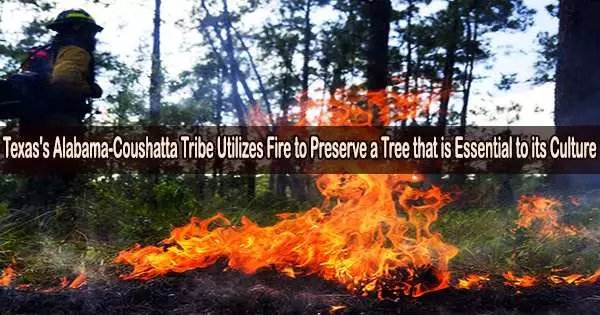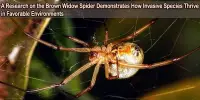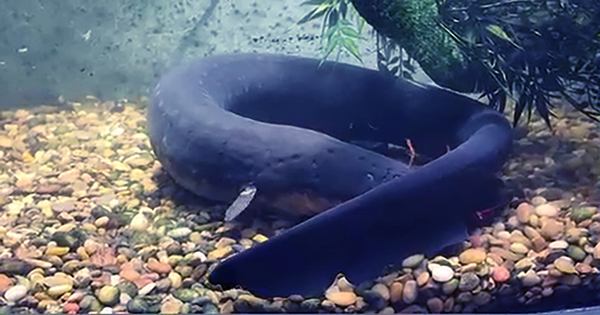Each bud on the longleaf pine bursts with wiry green fingers as its branches arch upward. The longleaf’s thick bark peels but shields the sturdy trunk below as flames sweep the landscape, igniting yuccas and loblolly pine saplings.
The longleaf loves fire. More important, it can’t survive without it.
90 million acres of the southern United States, from East Texas to Florida, were formerly covered in longleaf pine forests. The pines were able to flourish in woodlands that were home to red-cockaded woodpeckers and pink Texas trailing phlox flowers because to burns caused by Native American tribes and lightning fires.
Today, about 5 million acres remain.
In order to maintain the longleaf pines in East Texas, The Nature Conservancy and the Alabama-Coushatta Tribe of Texas have joined forces to restore “good fire.” Since many Indigenous communities have used tiny fires for centuries to control wildfires and restore native grasslands, the strategy is now being employed nationwide.
For The Nature Conservancy, the burns aim to preserve an ecosystem of plants and animals that rely on the longleaf. For the Alabama-Coushatta Tribe, who have long used the tree to prepare medicines and make baskets, the stakes are higher.
“It’s tied to not only culture, but our identity,” said Rochellda Sylestine, the tribe’s interim Historical Preservation Officer. “And when you start losing those things, or those things start disappearing … you cease being Alabama-Coushatta.”
The basket tree
On Alabama-Coushatta territory, Gesse Bullock grew up riding a bike around the lake and going on forest deer and rabbit hunts. In the tribe’s firefighting program, his aunts and uncles were frequently summoned away to put out wildfires across the nation. When they got back, they regaled Bullock with tales of hiking through Montana highlands or camping in Yellowstone. By his early teens, Bullock knew he wanted to follow in their footsteps.
As a child, Bullock knew of the longleaf as the basket tree. According to Sylestine, the tribe depended on the sale of baskets to survive during the Great Depression and until the 1980s, when Congress reinstated the tribe’s federal recognition, enabling it to exercise self-governance and receive financing for federal initiatives.
Fire has always been a part of our culture. Our people were known as the thicket-clearers, so we’re … ensuring that we’re living up to that name.
Gesse Bullock
According to Sylestine, the tribe continues to weave and sell baskets, and each basket maker has an own style. She claimed she can identify the maker simply by looking at the stitch design and color scheme. When she opens a basket’s lid, she describes the scent as home.
It was only as an adult that Bullock realized longleaf forests were dwindling on tribal lands. In the early 2010s, tribal leadership worked with the National Resources Conservation Service to plant saplings across 400 acres. But that wasn’t enough: The forests needed regular mowing and burning for the longleaf to return in full force.
“The longleaf were surviving,” Bullock said. “They weren’t thriving.”
Bullock returned home in 2018 to oversee the tribe’s fire management program after spending around 14 years working for the U.S. Forest Service’s wildlife and fire programs. He couldn’t see from one end of the longleaf forests to the other since they had turned into a thicket covered in foliage.
He remembers thinking: “We’ve got to open up these areas really quick, before we lose these trees.”
Bringing back good fire
Numerous Indigenous cultures have been burning forests for millennia in order to maintain access to trade and hunting routes, refresh the terrain for livestock, or clear underbrush. When European settlers first came, they put out Native American burns, and the U.S. government has long put out fires, even ones started by lightning.
“As we see more and more fire events happening, it’s important to understand how we might intervene in ways that promote healthy forests,” said Kerry Thompson, an anthropology professor at Northern Arizona University.
Thompson, along with Southern Methodist University anthropologist Christopher Roos, found that Indigenous cultural burns weakened the climate’s ability to cause fires for 400 years in the American Southwest. The small fires cleared vegetation that could have fed larger ones.
Native American tribes, charities, and governmental organizations are attempting to bring fire back to the landscape. In California, the Washoe Tribe is partnering with the U.S. Forest Service and California Tahoe Conservancy to restore a 300-acre meadow called Máyala Wáta. And at Cedar Hill State Park in Dallas, biennial burns aim to replenish the area’s native grasslands.
With assistance from the Indigenous Peoples Burning Network, a collaboration between The Nature Conservancy and the Alabama-Coushatta tribe was established roughly four years ago. Together, The Nature Conservancy and the tribe burn around 6,000 acres of The Nature Conservancy’s Roy E. Larsen Sandyland Sanctuary in Lumberton in East Texas as well as tribal land.
Ninety percent of a burn’s work lies in planning, said the Nature Conservancy’s Shawn Benedict. The tribe and the Nature Conservancy check the humidity, wind speed, and wind direction to make sure they will keep the fire contained and prevent smoke from blowing into the highway before finalizing a date.
8 to 15 members of the burn crew utilize drip torches to drop “dots” of fire around and inside the perimeter, as opposed to lighting flames using a pine branch or log, as certain tribes in the past did. The dots smolder, smoke and spread with the wind.
While driving around the fire in off-road vehicles, members of the Nature Conservancy and Alabama-Coushatta listen to digital radios for directions from the “burn boss,” generally Bullock or Benedict, who is surrounded by the roaring flames.
The burn is under control, unlike a wildfire. As a “fire break,” a line is dug into the ground between the flames and the highway so that the fire dies out at the edges while within, logs and vegetation smoke. Some large stumps or logs can burn for days.
For Bullock, fire is a family business. Among the Alabama-Coushatta burn crew are his sister-in-law Charity Battise and nephew Austin Thompson. Thompson said burns with his uncle feel like they’re hanging out at home, with Bullock poking fun if he spots Thompson trip over a log or stumble into the brush.
The same area is attacked by the fire crew once every one to three years, burning 50 to 400 acres at a time. The right time must be chosen in order to prevent the establishment of invasive species and promote the regrowth of native grasses.
Alabama-Coushatta kids packed onto a white fire engine after a recent burn and drove to a Woodville restaurant to chow down on burgers and chicken sandwiches. The burn boss, Benedict, stayed behind to circle the perimeter in an ATV, snuffing out any particularly smoky bits.
Inside the burn, loblolly pine saplings keeled over, their leaves shriveling. But the baby longleafs endured, streaks of green amid the blackened dirt.
Benefits of the burn
At Sandyland Sanctuary, the Nature Conservancy collects data at over 100 locations to measure the amount of longleafs and their loblolly pine competitors as well as the amount of competing vegetation and brush.
The first planned fire at Sandyland took place in 1978 and data collection began in 2014. The Nature Conservancy has yet to wrap up analysis on changes in the forests since 2014, but the nonprofit says the forests are trending in the right direction. From 2014 to 2021, the longleaf tree density at Sandyland increased by 4%.
According to the conservancy, it may take decades to completely restore the longleaf woods because trees don’t grow overnight.
Measuring progress at an outdoor sanctuary involves more variables than in a lab. After Hurricane Harvey in 2017, The Nature Conservancy diverted its efforts to measure how the forests recovered from flooding. And in 2020, the conservancy said the pandemic halted the burns, allowing forest brush to grow back and reversing some of the progress.
Despite the lack of data, Bullock said he’s seen the benefits of the burns. He is once again able to view pawpaw trees and mountain mint flowers in the woodlands. The needles on longleaf branches flutter in the wind and are almost long enough to be harvested for use in weaving baskets.
The tribe received recognition for its longleaf preservation efforts from the Big Thicket Association, a conservation organization in southeast Texas, last year.s Losing the forests would mean losing livelihood and history, Bullock said. He is determined not to let that happen.
“Fire has always been a part of our culture,” he said. “Our people were known as the thicket-clearers, so we’re … ensuring that we’re living up to that name.”
















